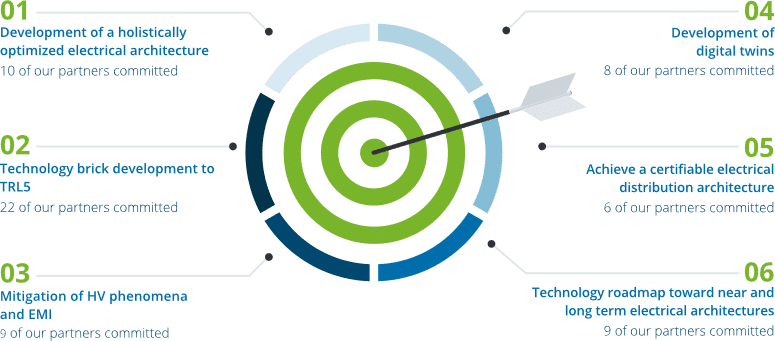Electric Aviation: FlightPath2050 and the Future of Flight

The FlightPath2050 of the Advisory Council for Aeronautics Research in Europe (ACARE) sets specific long-term goals to achieve climate neutral air mobility by 2050:
- net-zero CO2 emissions for all intra-EU flights and those departing the EU;
- 90% reduction in NOx emissions from all intra-EU flights and those departing the EU relative to the year 2000.
[source: Acare goals]

In parallel, the Airbus Global Market Forecast 2021 predicts a market demand for over 39,000 new aircraft until 2040, of which 15,000 are replacements of older, less fuel-efficient models.
[source: Airbus global market forecast]
Commercial aerospace evolution towards more-electric aircraft (MEA) has yielded operational and environmental benefits: recent aircraft platforms (B787, A350, Embraer-E2, etc.) utilize more-electric technologies to replace some of the legacy pneumatic and hydraulic systems, successfully demonstrating the potential for reducing weight, fuel-burn, and operating costs. However, the achievement of the ACARE emission reduction targets, in combination with the projected growth in aircraft market demand, requires the aviation industry to do a further step, by drastically shifting towards electric/hybrid-electric propulsion also for larger aircraft, thus resulting into high power distribution levels.
HECATE aims to deliver transformative technologies considering HVD for the electrical distribution of hybrid electric regional aircraft.
HECATE develops critical technologies for high-power, high-voltage and certifiable electrical distribution architectures capable of enabling hybrid-electric propulsion for regional platforms. The technology enablers at TRL5 in hybrid-electric propulsion for regional platforms can impact other aerospace domains such as UAM, SMR. Such architectures will drive the reduction of aircraft greenhouse gases toward the objectives of -30% net GHG emission reduction by 2035 and of zero emissions by 2050.

